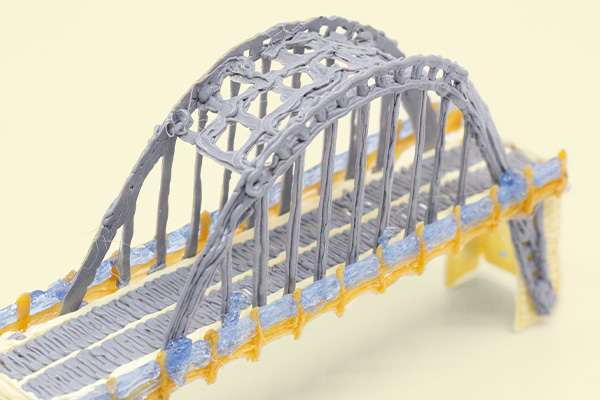The civil rights movement was a fight for equality for African Americans under the law in the United States. Dr. Martin Luther King, Jr. led the movement along with other civil rights activists in the 1950s and 1960s.
Revisit the history of the moment and engage students in an important classroom discussion about the work of Dr. King and other civil rights leaders. As you explore historic events, consider creating the Edmund Pettus Bridge in Selma, Alabama, which was the site of the Selma-Montgomery March in 1965.

Civil Rights Movement
Slavery was abolished at the end of the Civil War, but it didn’t end discrimination against Black people in the United States. The fight for equality would begin in earnest in the mid-20th century and continue for the next two decades.
After reconstruction, the South implemented a series of “Jim Crow” laws to erase gains made after the Civil War. The laws restricted voting rights for African Americans, banned interracial relationships and allowed businesses to separate clientele based on race.
On December 1, 1955, Rosa Parks refused to give up her seat to a white male passenger on a bus in Montgomery, Alabama. Police arrested Parks, and word of her situation spread quickly, igniting a series of protests. As a result of her act, Parks is known as the “mother of the modern-day civil rights movement.”

Dr. Martin Luther King Jr.
In response to Parks’ arrest, Black community leaders in Alabama formed the Montgomery Improvement Association (MIA). Dr. Martin Luther King Jr. led the MIA, a role that put him front and center in the fight for civil rights.
Through King’s leadership, the African American community experienced more progress toward racial equality in 13 years than in the past 350 years. Dr. King took inspiration from his faith and the teachings of Mahatma Gandhi to lead a nonviolent resistance that included protests, grassroots organizing, and civil unrest.
King was elected president of the Southern Christian Leadership Conference (SCLC) in 1957 to provide organizational leadership to the civil rights movement. In 1963, he led a coalition of groups in nonviolent protest in Birmingham, Alabama. The brutality that ensued by the city’s police force led to national outrage. Later that same year, King led the March on Washington, where he gave his famous “I Have a Dream” speech to an audience of a quarter-million people.
King became the youngest recipient of the Nobel Peace Prize in 1964 at 35. Also, in 1964, due in part to the March on Washington, Congress passed a landmark Civil Rights Act ending legal racial segregation in the U.S. Congress passed the Voting Rights Act a year later, in 1965, a result of the Selma to Montgomery, AL March for Voting Rights.

Relive a Moment in History: Selma to Montgomery
In January 1965, Dr. King led a coalition of activist groups to call for voting rights in Selma, Alabama, where despite repeated attempts, only two percent of Black voters were registered. The campaign saw mass arrests but little violence until February. Then, in Marion, Alabama, state troopers joined local police to break up a march. A state trooper shot a protester who later died from his wounds.
In response to the death, activists set out to march from Selma to Montgomery. While Dr. King was in Atlanta, Hosea Willams and John Lewis led the march. The marchers made their way through Selma across the Edmund Pettus Bridge. A blockade of state troopers and law enforcement officers ordered the marchers to disperse. When they refused, the troopers attacked the crowd with clubs and tear gas. Television coverage of the event, “Bloody Sunday,” as it became known, sparked national outrage.
On March 21-25, 1965, Dr. King participated in a federally sanctioned march from Selma to the steps of the capitol in Montgomery, Alabama. President Johnson signed the Voting Rights Act of 1965 with Dr. King and other civil rights leaders on August 6, 1965.
Make a bridge through history by recreating the Edmund Pettus Bridge in 3D. It’s an opportunity to learn from events of the past and understand the legacy of Dr. King and other civil rights leaders. The 3Doodler tutorial and stencil provides a straight-forward way to recreate this historic bridge.




